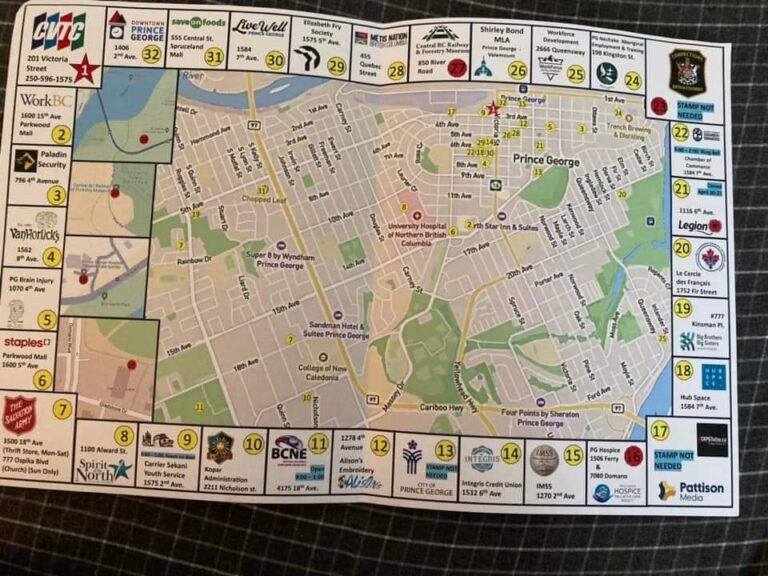One of the biggest scapegoats for the labor shortage in both the US and Canada, aside from Covid-19 of course, has been the governmental benefits that were put out to weather the storm in 2020 – namely, CERB in Canada and the federal benefits in the US. When the labor shortages strangled many businesses (particularly small ones), finger pointing fell squarely on these benefits, with many business owners in particular, stating that the shortage was due to people getting benefits and thus not wanting to work.
Realistically though, we cannot blame the benefits. For one thing, they have pretty well expired in both countries, and for another, the numbers don’t really add up. At the peak, benefits were around $2,000 per month in Canada and about $2400/month (extra) in the US which was quickly scaled back to $1200. This is nowhere near what people need to make in order to do more than barely survive and it certainly did not stop people from working once restrictions eased, or at least looking for work. It helped for sure (I know it did for us, for the couple of months we were on it), but it wasn’t enough to make people decide to give up on work.
We’ve written about this before: many people took the forced down time as an opportunity to become entrepreneurs, learn new skills, move to a new town to look for work, or go back to school. But what else is behind the labor shortage in areas such as hospitality?
It Ended with a Boom
Now that the idea that it was ‘all that darn money the government was pumping out’ has been largely put to rest (unless you’re Republican, *cough*), analysts started looking at what else could be behind it, aside from the ongoing fears of variants. One thing in particular has been standing out: the cause that labor analysts were predicted would happen five or seven years ago: retiring boomers.
The pandemic only sped up what was going to happen anyway: the boomers were a massive demographic and combined with the fact that birth rates have been steadily falling for millennials and Gen Xers and we have a widening hole that is left behind when the boomers reach age 60 or 65 and retire. But there are other considerations at play here:
- Covid-19 made not just twenty and thirty somethings rethink their life, but also the 55+ crowd and many of them, fearing their vulnerability to the disease, left the workforce early. Many are coming back now, but not enough to deal with the gaps, particularly in the hospitality sector
- The meteoric rise in housing prices means that many people have a lot of equity in their homes they can tap, or they can sell their house and downsize, living on the remainder. Even if they want to keep working, many people will choose to do so remotely, so living in small, cheap communities becomes viable. (This, by the way, has been one of the things causing a massive jump in housing prices in even small communities, but again, another time).
- The stock market has also improved, giving more wealth to older people who have been investing for a long time
- The massive amount of stress put on industries such as nursing and manufacturing (due to stress and a jump in manufacturing demands) meant that many people left the industries in droves just to escape the mental and emotional (and physical) strain. This in turn rippled out where people saw what those jobs were like and, to quote my eldest son: ‘noped out of there’.
So, if you want to put the blame on a generation for the shortages, maybe shift your gaze from those ‘lazy millennials’ and take a look at the boomers who are doing what they were predicted they would be doing: retiring and downsizing.
The Old Hiring Methods Stopped Working
In the US, there are over nine million job openings and over nine million people who are classified as needing work. Now, some of those people won’t work – that’s a given no matter where you are. But what about the rest? Well, many job seekers says that they never heard back about their applications and many businesses say that there aren’t enough workers to fit their needs.
We can see the same arguments laid out in Canada: millions of job seekers, millions of jobs, no one connecting. What gives?
A few things are going on here:
- Employers are still using the old ‘filter’ systems of high levels of education and work experience for jobs that really don’t require it. For a while there, education levels were being used as a filter for potential employees and it led some truly ridiculous posts: Master’s degree for a $15/hr job for example was a running joke, but at the peak of this trend, it was mostly true.
- A disconnect between what managers want (in office workers) and what employees want (more hybrid work)
- The automated systems that are being used by many companies to do their resume checks for them aren’t working very well, leading to qualified employees being overlooked.
- Many restaurants and coffee shops in particular are small businesses and they simply cannot afford to pay what people are demanding. There is no blame game attached to this: people deserve fair pay for what is now considered to be rather hazardous work (the chances of being exposed to viruses is high in hospitality sectors, even without taking into account rude customers who refuse to wear masks), and it’s hard for small businesses to pay what workers want.
I mean, to be honest, these methods never worked well, but the job market was weighted towards the employer side for a long time, so no one could do much about it. Now that the market has been weighed more to towards the job seekers, we are seeing these cracks and problems widen and deepen.
Covid-19 also made it much harder to do job fairs, networking events, and get into the hidden job market because there weren’t as many opportunities to do so. Once, again, we have a perfect storm of old methods hitting new challenges and crumbling.
Can You Teach an Old Dog New Tricks?
Analysts are now pointing out that there isn’t a labor shortage so much as a labor disconnect – businesses that want to do things they way they did in 2019 are going to have a much harder time than those who are willing to pivot. For example, due to online shopping, take out, delivery, and DIY renovations, there is a healthy demand for drivers, personal shoppers, manufacturers, and warehouse workers. Amazon had close to 200,000 job openings in 2021 and more are projected for 2022. Delivery services like Instacart are regularly posting for workers while long haul truck drivers and warehouse workers are in high demand. But if your business isn’t accounting for things like online shopping, social media marketing, and easy to use websites, you’re probably going to have a bad time.
Furthermore, most of these jobs don’t require a massive level of skill and it taps the need many job seekers have for flexibility and more freedom. (Instacart for example brags on its ability to let people work when and how they want. The pay is another matter, but it makes a good part time job for students, older folks, and people new to the job market or those who like to work evenings or early mornings). Combine this with more businesses giving perks and pay raises and you see an exodus of workers from waiting tables and cleaning patients to delivering goods, loading, and unloading boxes, and shopping for others.
Restaurants that offer curbside pick up, delivery services, and even branch out into things like selling coffee by the pound, catering small events, and things like crafting workshops, are doing better in this environment compared to those restaurants that refuse to do anything beyond dining room eating. And if you have the ability to let people order online, even better. Over the last two years, we have gotten quite well trained in ordering online and there are many people who will flat out refuse to go back to the old way of doing things.
In other sectors such as nursing, the issue is time: it takes time (and money) to train new workers in this field and in the meantime, the trained ones are leaving in droves due to stress, feeling ignored and angry, and vaccination mandates. While clinics and hospitals can’t do anything about the mandates, they can do things about the stress, such as hiring on more support workers who are faster to train, (such as health care assistants, community support workers and nursing assistants), offering better pay, and enticing retired nurses to come back with benefits, perks, and other tools. Many newly retired folks may be happy to go back to work if they feel it’s worth it. And of course, safety standards have to upheld with proper PPE.
Labor Disconnect, Not Shortage
I think it’s safe to say that there isn’t a labor shortage so much as a labor disconnect and to be honest, most of it is caused by things that were predicted long before covid-19: retiring boomers, a smaller cohort of millennials and now Gen Z to take their place, a bloated and difficulty hiring system and the rise of working remotely. Covid-19 simply accelerated these trends.
But we can see that where businesses were paying attention to the trends and pivoting to meet them, there has been a lot less trouble with attracting talent. From allowing hybrid and work models, to higher pay to better equipment and flexible schedules, businesses that could pivot and did pivot aren’t having nearly the same problems as those which refused (or could not) move with the times.
So, if you want to blame anything for the labor shortage, you have to look beyond the easy answer of government money and dig a little deeper. Workers today want more flexibility, better pay (especially with the increases in groceries, energy costs, and housing), a safer working environment, and to generally be treated as important workers. Businesses that ignore these things and continue to blame their woes on governmental supports that have expired do so at their peril. Businesses that offer these things and can more easily find their talent are going to do much better in the 2020s.
Is it labor shortage causing these problems or labor disconnect? And what are some workable solutions moving forward into 2022? Sound off on our Facebook page.

